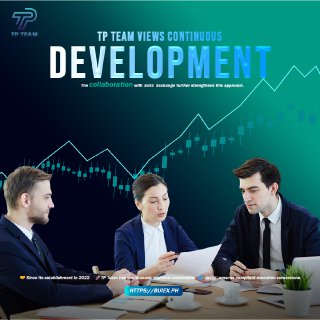Press Release
13-Year-Old Slave Girl Fights for Freedom in Gripping Historical Fiction Debut
Author Henry William Nist brings the past to life with the powerful story of Purrllee, a brave teen who rises against injustice in the 1800s.
Henry William Nist is proud to introduce his powerful new historical fiction novel, My Name is Purrllee Gaytes. This bold and moving story follows the journey of a young enslaved girl who decides to fight back against the cruel system that holds her and her loved ones captive. She crosses paths with Harriet Tubman who teaches her and inspires her to join the cause.

In My Name is Purrllee Gaytes, 13-year-old Purrllee is no longer willing to live in fear. On her birthday, she makes a brave choice to stand up for herself and claim her independence. Her journey starts with small acts of rebellion, but quickly turns into a powerful fight for freedom. As the story unfolds, readers witness Purrllee’s transformation from a scared girl to a fierce leader—one who reflects the courage and spirit of historical figures like Harriet Tubman.
This historical fiction novel doesn’t shy away from the painful truths of the past. Instead, it shines a light on them through the eyes of a young heroine. Set in the 1800s, during a dark time in American history, the story gives readers a glimpse into what life was like for those enslaved by greedy plantation owners. But beyond the hardship, it also offers a message of strength, hope, and the power of standing up for what’s right.
Whether you’re a fan of emotional coming-of-age stories, strong female characters, or American history, My Name is Purrllee Gaytes will leave a lasting impression. The novel’s engaging storytelling and relatable heroine make it a must-read for anyone who enjoys well-written historical fiction.
About the Author:
Author Henry William Nist brings a fresh and heartfelt voice to the literary world. An eight-year veteran of the U.S. Air Force, Henry is a husband of 44 years, a father of two daughters, and grandfather to seven grandchildren. After serving in the military, he spent most of his career in the corporate world doing administrative work and later moved into the telecom industry, where he has worked for 25 years. He is also a professional musician, performing locally and sharing his love for music.
Though new to publishing, Henry has been passionate about writing since junior high school. His interest in period pieces and deep respect for Civil War-era stories inspired him to finally share his work with the world. He holds a Bachelor’s of Science in Social Psychology and has pursued graduate studies in theology.
Through My Name is Purrllee Gaytes, Henry hopes to remind readers of the challenges people faced in the 1800s—especially those who were enslaved—and the importance of remembering history through stories of courage like Purrllee’s.
This powerful work of historical fiction is available now on Amazon.
For media inquiries, please contact:
Henry William Nist
Email: hnist@yahoo.com
Social Media
Facebook
Instagram
Media Contact
Organization: NYC Book Publishers
Contact Person: Peter Kim
Website: https://nycbookpublishers.com/
Email: Send Email
Contact Number: +13322871112
Address:100 Church Street 8th floor, Manhattan, NY, 10007
City: New York City
State: New York
Country:United States
Release id:30317
The post 13-Year-Old Slave Girl Fights for Freedom in Gripping Historical Fiction Debut appeared first on King Newswire. This content is provided by a third-party source.. King Newswire makes no warranties or representations in connection with it. King Newswire is a press release distribution agency and does not endorse or verify the claims made in this release. If you have any complaints or copyright concerns related to this article, please contact the company listed in the ‘Media Contact’ section
About Author
Disclaimer: The views, suggestions, and opinions expressed here are the sole responsibility of the experts. No Digi Observer journalist was involved in the writing and production of this article.
Press Release
BusinessFig Explores Imagix Crystal Ball Frenzy
News outlets report soaring demand for the Imagix Crystal Ball, with scalpers listing it for over $450 as stores sell out. Imagix urges shoppers to avoid resellers and buy only from BestBuy.com as more stock becomes available.
New York, NY, United States, 22nd Nov 2025 — BusinessFig.com, a leading business and consumer trends news platform, has published a featured report on the soaring demand for the Imagix Magic Crystal Ball Companion, a holographic smart toy emerging as one of this year’s most coveted holiday items. The full article is available HERE


The BusinessFig.com story details unnervingly long lines at Best Buy stores, frequent sellouts, and resellers listing the product for more than four hundred fifty dollars on online marketplaces. The coverage includes statements from an Imagix spokesperson urging consumers to avoid third-party sellers and to purchase directly through BestBuy.com if local store stock is gone. Additional shipments are confirmed to be arriving throughout the holiday season.
Beyond the resale frenzy, the article examines the appeal of the Imagix Crystal Ball Companion: advanced holographic display, interactive character companions, and a screen-free play format that resonates with both children and parents. BusinessFig.com identifies the product as a standout in this year’s competitive toy market and a heralded example of how innovation is driving holiday must-haves.


About BusinessFig.com
BusinessFig.com is a digital news outlet covering business trends, retail innovation and consumer technology. The platform delivers actionable insights and high-visibility reporting for industry executives, marketers and everyday consumers alike.
About Imagix
Imagix is the company behind the Imagix Magic Crystal Ball Companion, an advanced holographic interactive toy available at BestBuy retail locations and BestBuy.com.
Media Contact
Organization: BusinessFig.com
Contact Person: Gina Rathbourne
Website: http://businessfig.com/
Email: Send Email
Contact Number: +17325631832
Country:United States
Release id:37626
The post BusinessFig Explores Imagix Crystal Ball Frenzy appeared first on King Newswire. This content is provided by a third-party source.. King Newswire makes no warranties or representations in connection with it. King Newswire is a press release distribution agency and does not endorse or verify the claims made in this release. If you have any complaints or copyright concerns related to this article, please contact the company listed in the ‘Media Contact’ section
About Author
Disclaimer: The views, suggestions, and opinions expressed here are the sole responsibility of the experts. No Digi Observer journalist was involved in the writing and production of this article.
Press Release
Protocol-Driven Security Standards · TP Team Revalidates Trust for Institutional DeFi Adoption
The TP Team is launching an infrastructure framework designed to deeply integrate Protocol-Driven Security Standards with institutional asset management demands. This innovative solution provides a highly resilient, expert-calibrated operational environment, ensuring asset operations meet the highest standards of security and compliance. Our objective is to help institutions achieve long-term stable, compliant access to DeFi yield and sustain core competitiveness in the complex digital trading landscape.

Next-Generation Infrastructure Construction: Unifying Insight and Stability
The TP Team is building the next-generation digital trading infrastructure. We transform complex protocol logic and governance demands into liquid security assets, providing institutional clients with high-integrity, data-driven services. By deeply integrating formal verification models with secure distributed ledger infrastructure, we ensure every transaction is executed with extreme certainty and efficiency, guaranteeing investors a high-assurance trading advantage in the inherently volatile DeFi environment.

BUIEX Ensures Effective Execution and Full Compliance
BUIEX is essential for the effective operation of the TP Team’s protocol-driven security approach. Leveraging its powerful global regulatory compliance framework and formal verification mechanism, BUIEX ensures every DeFi asset operation possesses industry-leading security, high auditability, and operational integrity. Its transparent and highly efficient platform greatly facilitates the rapid deployment of the system, enabling institutional investors to confidently and securely manage assets within a compliant ecosystem.

Framework Achieves Controllable and Sustainable Growth
The foundation of the TP Team’s system lies in its forward-looking DLT-based security risk management system. We utilize real-time threat modeling, combined with multi-signature control and auditability, to ensure all investments are precisely managed, effectively reducing smart contract and operational risks. By proactively identifying changes in protocol vulnerabilities and integrating them with the advantages of our DLT security architecture, the TP Team minimizes systemic uncertainty, thereby maximizing long-term stable capital protection.

Confidently Seizing Intelligent Asset Management Opportunities
The TP Team’s protocol-driven security framework is built for institutional investors who want to capitalize on the future of DeFi while requiring a solid foundation of compliance assurance. By collaborating with the TP Team, clients gain access to a global, technologically advanced trading ecosystem that guarantees sustained financial growth and solidifies their market-leading position.
Backed by the strong capabilities of the BUIEX global platform and the TP Team’s cutting-edge security technology, institutional investors can confidently pursue their ambitious objectives, while commanding a competitive advantage in the rapidly changing digital market.

As the global financial industry moves towards efficiency and protocol-driven automation, the TP Team, through innovation, provides investors with unique tools and methods to seize these opportunities. The TP Team and BUIEX collaborate to ensure that every investment not only creates substantial financial returns but also supports institutional-grade security and sustainable, auditable autonomous finance development.
Media Contact
Organization: Trade Partner Team
Contact Person: Mr. Arnold Ross
Website: https://tpteam.com
Email: Send Email
State: Colorado
Country:United States
Release id:37630
The post Protocol-Driven Security Standards · TP Team Revalidates Trust for Institutional DeFi Adoption appeared first on King Newswire. This content is provided by a third-party source.. King Newswire makes no warranties or representations in connection with it. King Newswire is a press release distribution agency and does not endorse or verify the claims made in this release. If you have any complaints or copyright concerns related to this article, please contact the company listed in the ‘Media Contact’ section
About Author
Disclaimer: The views, suggestions, and opinions expressed here are the sole responsibility of the experts. No Digi Observer journalist was involved in the writing and production of this article.
Press Release
Effortless Heathrow Taxi Bookings with Sky Bridge Cars — A Better Start to Your London Journey
- The Smarter Way to Begin or End Your Heathrow Trip
London, UK, 22nd November 2025, ZEX PR WIRE, Anyone who’s flown through Heathrow knows the routine — long flights, queues at customs, juggling luggage and connections. It’s precisely at this point that Sky Bridge Cars steps in, turning what could be the most stressful stage of travel into the most relaxing one. Their Heathrow Taxi service was designed for people who value time, comfort and certainty.

From last-minute business departures to family arrivals from overseas, Sky Bridge Cars provides an effortless, end-to-end experience. Passengers simply book, meet their driver and ride — everything else is handled quietly in the background.
Three-Step Booking, Zero Stress
One reason travellers across the UK prefer Sky Bridge Cars is its friction-free online booking process:
- Choose your journey type – one-way or return.
- Enter details – pick-up address, flight number, terminal, date and time.
- Confirm instantly – secure payment, digital receipt, and driver assignment.
Within minutes you receive confirmation by email or WhatsApp including car type, registration and driver contact. The system automatically monitors flight status, meaning your driver adjusts if you land early or late — no extra coordination needed.
Vehicles Tailored to Every Traveller
Whether you’re a solo professional, a family of five or a small corporate group, Sky Bridge Cars has a vehicle to suit. The Heathrow fleet includes:
- Executive saloons – Mercedes-Benz E-Class, BMW 5 Series and Audi A6 for corporate comfort.
- Estate & MPV models – ideal for families and those with extra luggage.
- Minibuses – accommodating up to 8 passengers for group travel.
Each vehicle is climate-controlled, spotless, and fully insured. Complimentary bottled water, child seats (on request) and quiet rides make the journey feel more like a chauffeur service than a standard taxi.
Fixed Fares with British Clarity
Sky Bridge Cars believes transparency builds trust. Every Heathrow Taxi fare is fixed at the time of booking — there are no surprises for traffic, waiting time or detours. UK travellers appreciate knowing the exact price before setting off, and international guests find it refreshing to avoid hidden extras that often appear in metered rides.
You can pay securely online, by card, or set up a company account for recurring transfers. Invoices and receipts are issued automatically, ensuring compliance with UK business-travel requirements.
Why It Works So Well for UK Travellers
The team at Sky Bridge Cars is made up of locals who understand London’s roads, not just its postcodes. Their drivers know when to avoid the M25 bottleneck, how to reach Paddington during strike hours, and which routes offer scenic drives for first-time visitors.
Whether you’re heading from Heathrow to Oxford for a conference, to Windsor for a weekend, or simply home to Surrey, your driver’s local knowledge can save both time and frustration. This familiarity with UK traffic patterns — including school-run delays and event closures — gives Sky Bridge Cars a genuine edge over app-based services.
Safety and Professional Standards
Every driver employed by Sky Bridge Cars holds a Transport for London (TfL) licence, is DBS-checked, and undergoes regular customer-service training. Vehicles are inspected daily for safety and cleaned thoroughly before every trip.
To complement safety with sustainability, the company continues to expand its hybrid and fully electric Heathrow fleet. Travellers who choose Sky Bridge Cars contribute to cleaner air without sacrificing comfort — a welcome step in Britain’s drive toward greener transport.
Customer Service that Travels with You
Behind every successful transfer is a responsive operations team. Sky Bridge Cars provides live phone and WhatsApp support 24 hours a day. Need to update a pickup time? Lost an item in the car? A real person responds immediately — not a bot.
Many passengers comment that this human touch makes a noticeable difference: polite reminders, reassurance during delays and genuine follow-ups after the journey. It’s customer care the way UK travellers expect it — practical, polite and personal.
Ideal for Business, Family and Tourism
Corporate users appreciate monthly invoicing, flight monitoring and account dashboards showing upcoming journeys. Families value reliability after long-haul flights. Tourists enjoy a warm British welcome without the anxiety of unfamiliar transport systems.
For event organisers, weddings, or conference logistics, the company can coordinate multi-vehicle fleets arriving at different terminals simultaneously — all under one master booking.
Real Reviews, Real Reliability
Online feedback reinforces what passengers already know. Reviews on Google and Trustpilot praise Sky Bridge Cars for punctuality, friendliness and exceptional value. Words like “smooth,” “professional,” and “stress-free” appear repeatedly — the qualities that define true service excellence in the UK airport-transfer market.
Make the Smart Choice Before You Fly
For Britons returning from holidays, international visitors exploring London, or business executives connecting flights, booking a Heathrow Taxi with Sky Bridge Cars ensures a perfect start or finish to the journey.
Avoid the queues, sidestep the stress and arrive exactly when you need to — relaxed, refreshed and ready.
About Author
Disclaimer: The views, suggestions, and opinions expressed here are the sole responsibility of the experts. No Digi Observer journalist was involved in the writing and production of this article.
-
Press Release6 days ago
Promax Pogo Pin Offers Robust Pogo Pin Keyboards for Enhanced Input Precision
-
Press Release6 days ago
Company Fyllo Expands Company Registration Services Across 5 Major Cities in South India – Bangalore, Chennai, Coimbatore, Madurai & Trichy
-
Press Release5 days ago
Poseidon Boat Achieves Landmark Lloyd’s Register Certification for 10-Meter Aluminum Catamaran Patrol Boats
-
Press Release1 week ago
Holiday Ice Inc. Announces Expanded Availability of Its Arctic-Temp Industrial Ice Machine Line for High-Demand Processing Industries
-
Press Release1 week ago
AVIDLOVE Launches Black Friday & Cyber Monday Extravaganza! Extended Duration and Multi-Layer Offers Create a Unique Shopping Experience
-
Press Release5 days ago
Quantari Exchange Emerges as a Global Digital Asset Powerhouse: Redefining Real-Time Trading, Instant Contracts, and the Future of Digital Gold
-
Press Release1 week ago
AI Vidya Launches with Mission to upskill 100,000 AI Engineers from Underprivileged and Under-employed Families in the Next Five Years
-
Press Release3 days ago
Tradeview Markets Celebrates Major Success at Jeddah Fintech Week 2025, Organized Under the Patronage of His Royal Highness Prince Dr. Saif Al-Islam Bin Saud Bin Abdulaziz Al Saud



